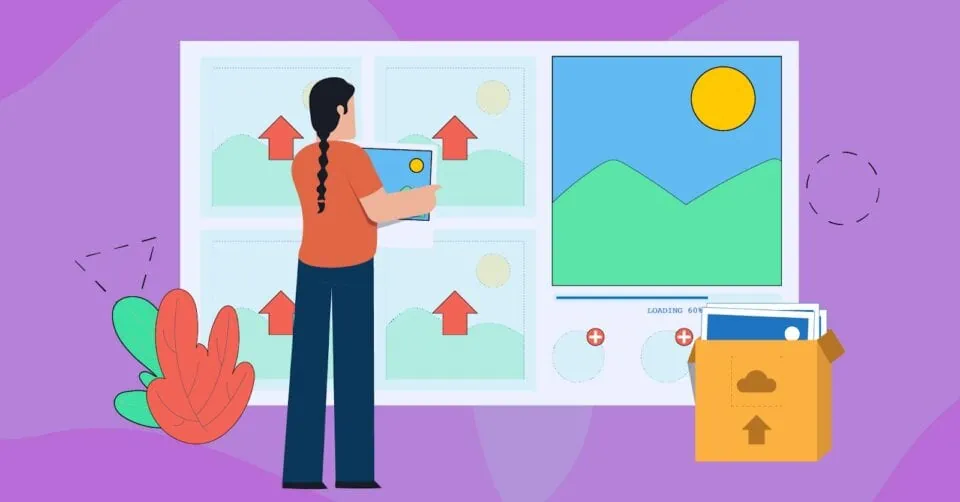Local SEO for Florists: How to Attract More Customers and Sell More Flowers
Last updated Nov. 17, 2024

Written by Iftekhar Chowdhury. In collaboration with oDeskStudio

Imagine this: A couple realizes they forgot to order flowers for their anniversary. It’s 10 a.m., and they’re desperately searching “flower delivery near me.” If your flower shop doesn’t show up, someone else will be making their day special.
That’s where Local SEO comes in. Local SEO ensures that when customers search for florists, your shop is the first name that blooms into their search results. Ready to grow your visibility and your bouquet orders? Let’s dig into these 10 strategies tailored just for florists.
Why Local SEO is Essential for Florists

Flowers are often bought for last-minute occasions: a birthday, a wedding, or a surprise. That means your customers rely heavily on local searches to find your shop. Local SEO ensures you’re not just another flower shop in the area but the first choice.
Here’s why it matters:
- 46% of Google searches are local.
- 86% of people look up business locations online.
- Local SEO helps convert searchers into loyal customers.
Step 1: Optimize Your Google Business Profile
Your Google Business Profile (GBP) is your virtual storefront. When someone searches for “florist near me,” it’s often the first thing they see.
How to Perfect Your GBP:
- Add accurate NAP (Name, Address, Phone Number).
- Use photos of your best arrangements and storefront.
- Update your hours (especially during holidays like Valentine’s Day or Mother’s Day).
- Write a compelling business description with keywords like “same-day flower delivery in [City].”
Bonus: Encourage customers to leave reviews on your profile.
Step 2: Create Localized Service Pages
If your flower shop serves multiple areas, build location-specific pages for each city or neighborhood.
What to Include:
- City-focused keywords, such as “wedding flowers in [City]” or “funeral flower delivery in [City].”
- Customer reviews from that specific area.
- Photos of arrangements delivered to local venues.
Step 3: Target Seasonal Keywords
Florists thrive on seasonal demand. Optimize for keywords related to popular holidays and events.
Examples of Seasonal Keywords:
- “Valentine’s Day roses in [City].”
- “Christmas wreath delivery near me.”
- “Spring flower bouquets in [City].”
Plan your content calendar around these trends and create blog posts, landing pages, or social media campaigns for each occasion.
Step 4: Leverage Schema Markup
Schema markup is like giving Google a cheat sheet about your business. For florists, use:
- Local business schema to highlight your shop’s address and hours.
- Product schema to showcase popular bouquets or arrangements.
- FAQ schema to answer common questions like “Do you offer same-day delivery?”
This helps your listings stand out in search results.
Step 5: Use Reviews to Build Trust
Customers trust reviews, especially when deciding between florists. A glowing review could be the difference between someone choosing your shop or a competitor’s.
Tips to Get More Reviews:
- Send an email asking for feedback after every purchase.
- Offer a discount or free delivery for leaving a review.
- Display your best reviews on your website and social media.
Step 6: Start a Flower-Focused Blog
Blogging isn’t just for writers—it’s a powerful SEO tool for florists. Share your expertise and engage with your audience by writing posts like:
- “The Meaning Behind Different Types of Flowers.”
- “How to Choose the Perfect Wedding Bouquet.”
- “Top 5 Tips for Keeping Your Flowers Fresh Longer.”
Make sure to include keywords like “floral arrangements in [City]” to rank for local searches.
Step 7: Optimize for Voice Search
With the rise of smart speakers, many customers now search hands-free. Optimize your content for voice queries like:
- “Where can I buy roses near me?”
- “Who offers same-day flower delivery in [City]?”
- “Best florist for weddings in [City].”
Use conversational language in your content to match how people speak.
Step 8: Build Local Backlinks
Backlinks are like referrals—they tell Google your business is credible. Focus on getting links from:
- Wedding venues that recommend your flowers.
- Event planners who use your services.
- Local bloggers or magazines that feature your arrangements.
Step 9: Use Social Media to Boost Local Reach
Social media is a visual goldmine for florists. Use platforms like Instagram and Pinterest to showcase your best work.
Ideas for Posts:
- “Behind the scenes” clips of bouquet arrangements.
- Customer testimonials with their purchased flowers.
- Promotions for seasonal bouquets or discounts.
Tip: Tag local venues or customers to expand your reach.
Step 10: Monitor and Improve with Analytics
Track your progress using tools like Google Analytics and Google Search Console.
Metrics to Monitor:
- Website traffic from local searches.
- Click-through rates on your GBP.
- Conversions from specific landing pages or keywords.
Use this data to refine your strategy and improve your rankings over time.
Conclusion
For florists, local SEO isn’t just a strategy—it’s a lifeline. By implementing these 10 steps, you’ll not only grow your visibility but also attract more customers who are eager to brighten someone’s day with your blooms.
Get started now, and let your flower shop become the go-to destination for all things floral in your community.
